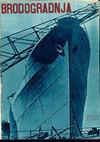弯曲航道中船舶航迹和航速的控制方法
IF 3.9
4区 工程技术
Q1 ENGINEERING, MARINE
引用次数: 0
摘要
由于弯曲航道中的自然和外部影响,船舶经常需要调整航向和航速,这给现有的控制方法带来了挑战。尤其缺乏适合弯曲航道航行的速度控制方法。本研究最初开发了一个包含外部干扰的三自由度 MMG 模型。它引入了一种 OP-PID 航向控制器,将最优控制策略与传统的 PID 相结合,可同时适应外部条件和船速,并通过航向控制模拟进行了验证。研究分析了船舶的速度变化过程,推导出了前进距离的数学表达式,并提出了一种基于二分法的速度控制方法来确定速度变化点,解决了具有未知积分的微分方程问题。为减少不确定性误差,如船舶操纵模型参数不准确和动态环境干扰,研究提出了一种综合控制方法。该方法集成了模型预测控制、反馈补偿、航段识别和增强型视线(LOS)制导方法,以及 OP-PID 航向控制器和基于二分法的速度控制。在东柏坡水道进行的仿真实验比较了提出的方法和现有方法。结果表明,即使在模型误差和外部干扰的情况下,所提出的方法也能有效地处理频繁的航向和速度调整,与现有方法相比,具有更高的航迹偏差和航向控制精度。本文章由计算机程序翻译,如有差异,请以英文原文为准。
Control method for the ship track and speed in curved channels
Due to natural and external influences in curved channels, ships frequently require adjustments in course and speed, posing challenges for existing control methods. Particularly lacking are speed control methods suitable for curved channel navigation. This study initially developed a three-degree-of-freedom MMG model incorporating external interference. It introduced an OP-PID heading controller merging optimal control strategies with traditional PID, adaptable to both external conditions and ship speed, validated through heading control simulations. The study analysed the ship's speed change process, deriving a mathematical expression for advance distance, and proposed a dichotomy-based speed control method to determine speed change points, addressing differential equations with unknown integrands. To mitigate uncertainty errors like parameter inaccuracies in ship maneuvering models and dynamic environmental disturbances, the study proposed a comprehensive control approach. This approach integrates model predictive control, feedback compensation, segment identification, and an enhanced line-of-sight (LOS) guidance method alongside the OP-PID course controller and dichotomy-based speed control. Simulation experiments in the Dongboliao Channel compared the proposed and existing methods. Results demonstrate the proposed method's capability to handle frequent course and speed adjustments effectively, even under model errors and external interference, showcasing superior track deviation and course control accuracy over existing methods.
求助全文
通过发布文献求助,成功后即可免费获取论文全文。
去求助
来源期刊

Brodogradnja
ENGINEERING, MARINE-
CiteScore
4.30
自引率
38.90%
发文量
33
审稿时长
>12 weeks
期刊介绍:
The journal is devoted to multidisciplinary researches in the fields of theoretical and experimental naval architecture and oceanology as well as to challenging problems in shipbuilding as well shipping, offshore and related shipbuilding industries worldwide. The aim of the journal is to integrate technical interests in shipbuilding, ocean engineering, sea and ocean shipping, inland navigation and intermodal transportation as well as environmental issues, overall safety, objects for wind, marine and hydrokinetic renewable energy production and sustainable transportation development at seas, oceans and inland waterways in relations to shipbuilding and naval architecture. The journal focuses on hydrodynamics, structures, reliability, materials, construction, design, optimization, production engineering, building and organization of building, project management, repair and maintenance planning, information systems in shipyards, quality assurance as well as outfitting, powering, autonomous marine vehicles, power plants and equipment onboard. Brodogradnja publishes original scientific papers, review papers, preliminary communications and important professional papers relevant in engineering and technology.
 求助内容:
求助内容: 应助结果提醒方式:
应助结果提醒方式:


